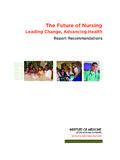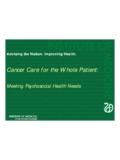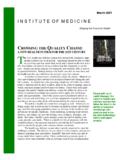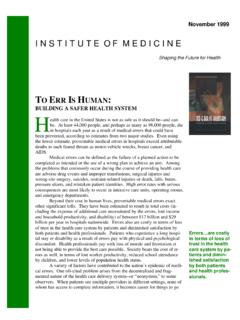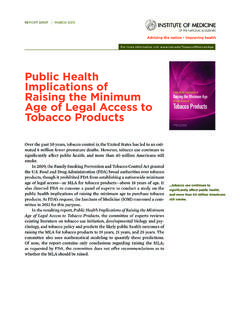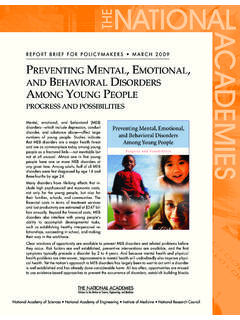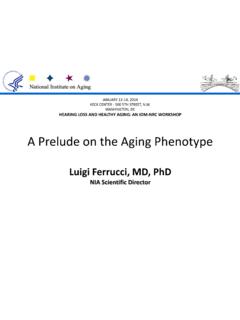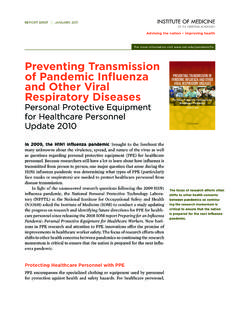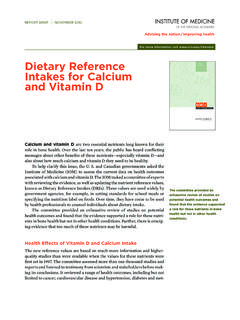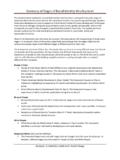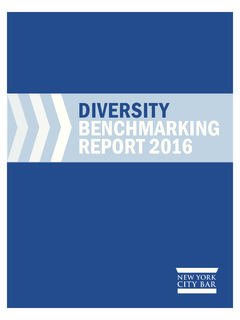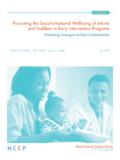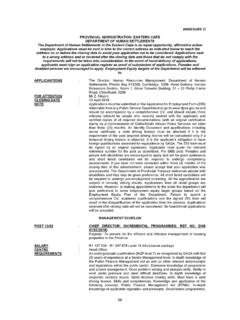Transcription of Best Care at Lower Cost - National-Academies.org
1 best care AT Lower COSTThe Path to Continuously Learning Health care in AmericaFor more information visit best care at Lower cost The Path to Continuously Learning Health care in AmericaHealth care in America has experienced an explosion in knowledge, inno-vation, and capacity to manage previously fatal conditions. Yet, paradoxically, it falls short on such fundamentals as quality, outcomes, cost , and equity. Each action that could improve quality developing knowledge, translating new information into medical evidence, applying the new evidence to patient care is marred by significant shortcomings and inefficiencies that result in missed opportunities, waste, and harm to patients.
2 The full extent of these shortcomings is visible when considering how other industries routinely operate compared with many aspects of health care . Builders rely on blueprints to coordinate the work of carpenters, electricians, and plumbers. Banks offer customers financial records that are updated in real time. Automobile manufacturers produce thousands of vehicles that are stan-dardized at their core, while tailored at the margins. While health care must accommodate many competing priorities and human factors unlike those in other industries, the health care system could learn from these industries how to better meet specific needs, expand choices, and shave costs.
3 Americans would be better served by a more nimble health care system that is consis-tently reliable and that constantly, systematically, and seamlessly improves. In short, the country needs health care that learns by avoiding past mistakes and adopting newfound successes. In response to widespread demand for an improved health care system, the Institute of Medicine (IOM) convened a committee to explore health care challenges and to recommend ways to create a continuously learning health care system. Its work was supported by the Robert Wood Johnson Foundation, the Blue Shield of California Foundation, and the Charina Endowment Fund, and it builds on landmark IOM reports published in the past two decades, including To Err Is Human: Building a Safer Health System, Crossing the Qual-Americans would be better served by a more nimble health care system that is consistently reliable and that constantly, systematically, and seamlessly BRIEF SEPTEMBER 20122 FIGURE: A Continuously Learning Health care System ity Chasm.
4 A New Health System for the 21st cen-tury, and Unequal Treatment: Confronting racial and Ethnic Disparities in Health care . The IOM offers its recommendations in best care at Lower cost : The Path to Continuously Learning Health care in an Adaptive SystemBecause health care is complex and constantly changing, the committee set out to chart a tran-sition to a system that learns, in real time and with new tools, how to better manage problems. Indeed, such opportunities now exist that were not available just a decade ago.
5 Vast computa-tional power is increasingly affordable, and con-nectivity allows information to be accessed in real time. Human and organizational capabilities offer expanded ways to improve the reliability and effi-ciency of health care . And health care organiza-tions and providers recognize that effective care must be delivered by collaborative teams of clini-cians, each member playing a vital role. Yet simply acknowledging such opportunities does not nec-essarily result in putting them to good use. The responsibility for building a continu-ously learning health care system rests on many shoulders because the stakes are high.
6 As the IOM committee reports, every missed opportunity for improving health care results in unnecessary suf-fering. By one estimate, almost 75,000 needless deaths could have been averted in 2005 if every state had delivered care on par with the best per-forming state. Current waste diverts resources; the committee estimates $750 billion in unneces-sary health spending in 2009 alone. Data generated in health care delivery whether clinical, delivery process, or financial should be collected in digital formats, compiled, and protected as resources for managing care , capturing results, improving processes, strength-ening public health, and generating knowledge.
7 The Department of Health and Human Ser-vices (HHS) can encourage not only this digital capacity, but also the development of distributed data research networks and expanded access to health data resources to improve care , Lower costs, and enhance public health. Payers and medical product companies also should contrib-ute more data to research groups to generate new insights. Patients should participate in developing robust data utility; use new tools, such as personal portals, to better manage their own care ; and be involved in building new knowledge, such as through patient-reported Reliable Clinical Knowledge to PatientsImproving the data infrastructure and data utility would require revising and streamlining research regulations to improve care , promote capture of clinical data, and generate knowledge.
8 Regulators can clarify and improve rules governing the col-lection and use of clinical data to safeguard patient privacy while promoting the seamless use of such data for better care coordination and manage-ment, improved care , and enhanced knowledge. Decision support tools and knowledge man-agement systems can be included routinely in health care delivery to ensure that decisions are informed by the best and testing a reliable set of measures of patient-centeredness for consistent use across the health care system. CMS and other payers should promote and measure patient-centered care through payment models, contracting poli-cies, and public reporting programs.
9 And digital technology developers and health product inno-vators should develop tools to assist individuals in managing their health and health the Policy EnvironmentThe culture of health care is central to promoting learning at every level. The prevailing approach to paying for health care , based predominantly on individual services and products, encourages wasteful and ineffective care . Instead, payments should reward desired care outcomes and move-ment toward providing the best care at Lower cost . Payers should adopt outcome- and value-oriented payment models, contracting policies, and benefit design to reward and support high-quality, team-based care focused on patients needs.
10 Health care delivery organizations, clini-cians, and payers should increase the availability of information about the quality, price, and out-comes of care , and professional specialty societies should encourage transparency in the informa-tion provided by their members. Likewise, pay-ers should promote transparency to help their members make better decisions. And consumer and patient organizations should disseminate this information to spur conversations and promote informed decision making. The adoption of a learning health care sys-Current waste diverts resources; the committee estimates $750 billion in unnecessary health spending in 2009 alone.
